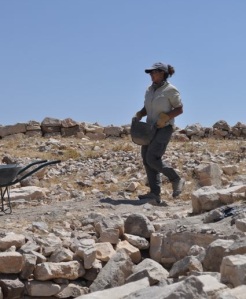I am in disbelief that today was the last day in the field, or I guess surprised at how natural and normal waking up at 4AM seems to me. Skipping back six weeks we all received an email from Professor Porter the night before our first day on site, we were all warned that we would have to wake up early the next day, but early for me is an 8AM lecture. When I opened the schedule enclosed in the email Professor Porter sent out, literally my jaw dropped. 4:30AM breakfast?! Are they crazy?! That idea along with second breakfast seemed ridiculous, but now the thought of not waking up to the call to prayer and not hearing the call for istraha (break) seems foreign. I wouldn’t be suprised if tomorrow I freak out that I overslept for the field and start getting ready, only to realize that the season is done. I guess it is a bittersweet ending, but in all honestly I think a six week extension would kill me (or I would trip and be attacked by wadi dogs). These last six weeks were some of the hottest, hardest, and most interesting I have ever had. I think it is pretty cool that in sometime, when the site is developed, I can look back and say I helped with that, and know that I held a fragment/shard/sherd of history in my hands.
As we wrapped up the last day in the field it was like any other day; goats and sheep roaming the wadi, shepard boys on donkeys, and brushes flying. The only noticeable difference was the movement of dirt back into the squares we had so carefully cleaned and excavated the past weeks. As I sat on a boulder tossing cobbles into my unit to backfill I started laughing at the ridiculous game another student and I were playing, backfill bedrock rock basketball (basically trying to toss the cobbles in the section of the wall we knocked down). As I was laughing, semi delusional from the heat, at the goofiness I realized I will really miss this work. As the 12:30 call to prayer stated I was finished, I made it though with all the swass (sweaty butt), swack (sweaty back), and sweat t-shirt contests, it is over and I really cannot wrap my head around it. I will miss chaotic Jordan.
Mackenzie Constantinou, UC Berkeley
Filed under: Uncategorized







